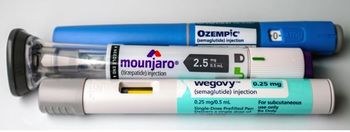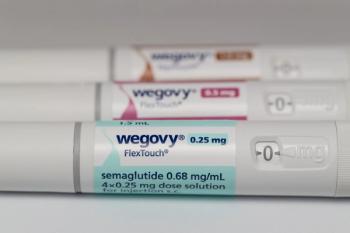
Pediatric Tricks of the Trade: What They Didn’t Teach You in Residency
Here: strategies for making the exam more comfortable and efficient, and tips for using topical anesthetics, removing earwax, extracting a plantar foreign body, and approaching the Dx of appendicitis.
According to Dr Emily MacNeill from Carolinas Medical Center, it is important to do your best to keep your pediatric patients comfortable during the history, exam, and any necessary procedures to best evaluate them. She covered this and related topics during her lecture at the American College of Emergency Medicine 13th annual symposium in Seattle (ACEP13) entitled “Pediatric Tricks of the Trade: What They Didn’t Teach You in Residency.”
Dr MacNeill advised the audience to make sure not to perform procedures or even invasive parts of the physical exam without a good reason. From the perspective of a child who is already feeling unwell, even the physical exam can be very scary. Being held down while things are shoved into your ears or throat, or while a cold stethoscope is placed on your back is not fun, and can be distressing to a child. It can also lead to a more difficult and less reliable clinical evaluation.
Initiating the encounter in a happy and playful manner appropriate for the child’s age is a good way to start things off. For all young children, Dr MacNeill recommends letting them hold the stethoscope, otoscope, tongue depressor, or any other devices before “using” it on them. This can go a long way to lessening the anxiety when you approach them with the device in your own hands. In addition, the use of “fun” props to keep kids happy or distracted can help. Examples she gave were soap bubbles, a computer tablet with a cartoon or game on it, stickers or a stuffed animal.
In the emergency department or hospital, treating pain and fever and giving the child a little time to acclimate to a new and strange environment may also be useful. The clinician may find that a child who is initially quite apprehensive, may be much calmer 10, 15, or 30 minutes later even when no medications have been given. The child may remember that you were “not so bad” on the initial encounter when the history was obtained and so may determine you are no longer “scary” and may therefore be more cooperative with the physical exam.
Dr MacNeill gave specific advice for different age groups. For a newborn, age less than 28 days, there is no need to attempt an otoscopic exam because the ear canal is still too narrow to be able to see the tympanic membrane. Stranger anxiety is not an issue at this age, but keeping the neonate warm should be a comfort priority.
For infants, aged 28 days to 1 year, make sure to save the scariest or most uncomfortable part of the exam for last, since crying may ensue, which can hinder most parts of the exam other than inspection of the oropharynx. For toddlers, who are usually anxious around strangers, keep them in their parent’s lap for as much of the exam as possible. Consider “ignoring” them initially while obtaining the history from the parent, so that the child doesn’t feel that he or she is “under the spotlight.” Consider performing a brief mock physical exam on a cooperative sibling or the parent first so the toddler sees there is nothing to be afraid of. If your and the parents' acting skills are good, the child may even look forward to his or her turn. If he or she doesn't "buy" it, you may have to hold the toddler down for certain parts of exam. If this is required, again, save it for last and get appropriate help so the exam is done efficiently and safely.
For school-aged children, who may be worried that they are going to get a shot, be sure to explain things before they happen, but be careful with your terminology. Use euphemisms like a “straw” for an IV and a “string Band-Aid” for stitches.
For teenagers, try not to blame them for their unique moods and attitudes. Try to be respectful of their independence but stay firm if there are refusals where compromise is not safe. Consider giving them time to think it over and come back later.
Dr MacNeill recommended trying to minimize the use of ionizing radiation in children, but not at the expense of missing cases of serious diseases such as appendicitis. For appendicitis, use ultrasound first in most cases: sensitivity is quite good (about 88% in children). If your radiology department lacks skills to perform and read ultrasound for appendicitis, consider pushing the envelope and getting them to start. If suspicion is low or intermediate and ultrasound results are negative, consider home observations with 8- to 12-hour follow-up.
If suspicion of appendicitis is high and you want to order a CT scan, do your best to ensure the procedure is done right the first time. Do what it takes to avoid duplicate CT scanning because the patient moved or because your radiologists did not approve the type of contrast used. Knowing the preferences of both your surgeons and radiologists can help avoid unnecessary testing and unnecessary delays.
Use topical anesthetics such as LET (lidocaine, epinephrine, tetracaine), EMLA (eutectic mixture of local anesthetics), LMX-4 (4% lidocaine), and/or needle-free anesthetic jet injections systems (such as the “J-tip”) to minimize the pain associated with injections of anesthetics. Most all lacerations on the head and neck, and most lacerations on the rest of the body, can be adequately anesthetized with a topical product alone without the need for additional injections. Be sure that a cotton ball is used rather than gauze, that contact area is maximized, and that there is adequate contact time. Products that contain epinephrine often cause the surrounding skin to blanch-giving you a good idea of what area is numb. Keeping suture punctures closer to the wound edge may help avoid skin areas that are not fully numb.
Procedures can be a challenge in pediatric patients-and none is more common than earwax removal. Earwax removal is usually unnecessary in cases of upper respiratory tract infections without ear pain and if it won’t change management it can be avoided if you see it is likely to cause the child distress. This is especially true since in most cases observation alone is the appropriate initial management for mild otitis media. If you do need to remove the wax, Dr MacNeill recommended using either Cerumenex or liquid docusate in the ear for 15 minutes followed by irrigation. This method should be avoided if the child has a tympanostomy tube or if you suspect a ruptured eardrum.
To remove a plantar foreign body, such as a splinter or a needle, consider using a posterior tibial nerve block, which with one injection should numb almost all of the sole except the most lateral part. Unfortunately sedation may be required in certain patients.
Newsletter
Enhance your clinical practice with the Patient Care newsletter, offering the latest evidence-based guidelines, diagnostic insights, and treatment strategies for primary care physicians.

































































































































































































































































































